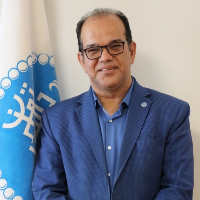Spatial Assessment of Vulnerability to Earthquake in Rural Settlements Using a Fuzzy Inference System (Case Study: Rural Settlements in the Tehran Metropolitan Area, Iran)
One of the regions with a high risk of earthquakes in Iran is the Tehran metropolitan area, which includes the provinces of Tehran and Alborz. In recent years, due to population growth, uncoordinated and unprincipled growth, and non-standard construction near the faults, the rural settlements in the Tehran metropolitan area have been more exposed to risk and vulnerability. Therefore, this study aims to spatially assess the potential vulnerability of rural settlements in the Tehran metropolitan area to earthquakes.
The study population includes all rural settlements located in Tehran and Alborz provinces, which according to the 2016 census, totalled 1519 villages, and among them, 472 villages whose data were available were selected as a sample. Data analysis was performed using a fuzzy inference system (FIS), creating a database of fuzzy rules and combining different indicators in MATLAB software. The output was converted into a map, and its spatial distribution was displayed using ArcMap software.
The findings of the spatial evaluation of population vulnerability indicators, the vulnerability of residential units and earthquake risk indicate the high vulnerability potential of rural settlements to earthquakes. So that the major part of the studied area has a high potential for vulnerability and only limited areas scattered throughout it have a low and medium potential for vulnerability to earthquake risk.
The spatial zoning of the vulnerability of rural settlements to earthquakes in the Tehran metropolitan area has the most similarity with the vulnerability indicator of residential units. As a result, one of the top priorities in this area must be considering retrofitting rural houses.
-
Introducing an Intelligent Web Scraping (Mining) Method for Analysing Online Reviews of Tehran Accommodation Users
Athare Ayashi, Ahmad Porahmad *, Hassan Ali Faraji Sabokbar, Saeed Zanganeh, Fabio Carbone
journal of urban tourism, -
Analysis and Evaluation of Cooperative Management of Natural Resources (Forest and Pasture) in Rural Areas of Dena County
Sorayyah Rouz Farakh, *, Alireza Darban Astaneh, Hasanali Faraji Sabokbar
Geography and Sustainability of Environment, -
Analysis of the spatial pattern of the rural settlements vulnerability to earthquakes (case study: rural settlements in the Tehran metropolitan area)
, Hassan Ali Faraji Sabokbar*,
Housing And Rural Environment, -
Analysis of Sspatial-temporal Changes in the Development of Ecolodges in Iran
*, Hossein Hosseinpour, Mehdi Asadi
Journal of Tourism and hospitality marketing research,




